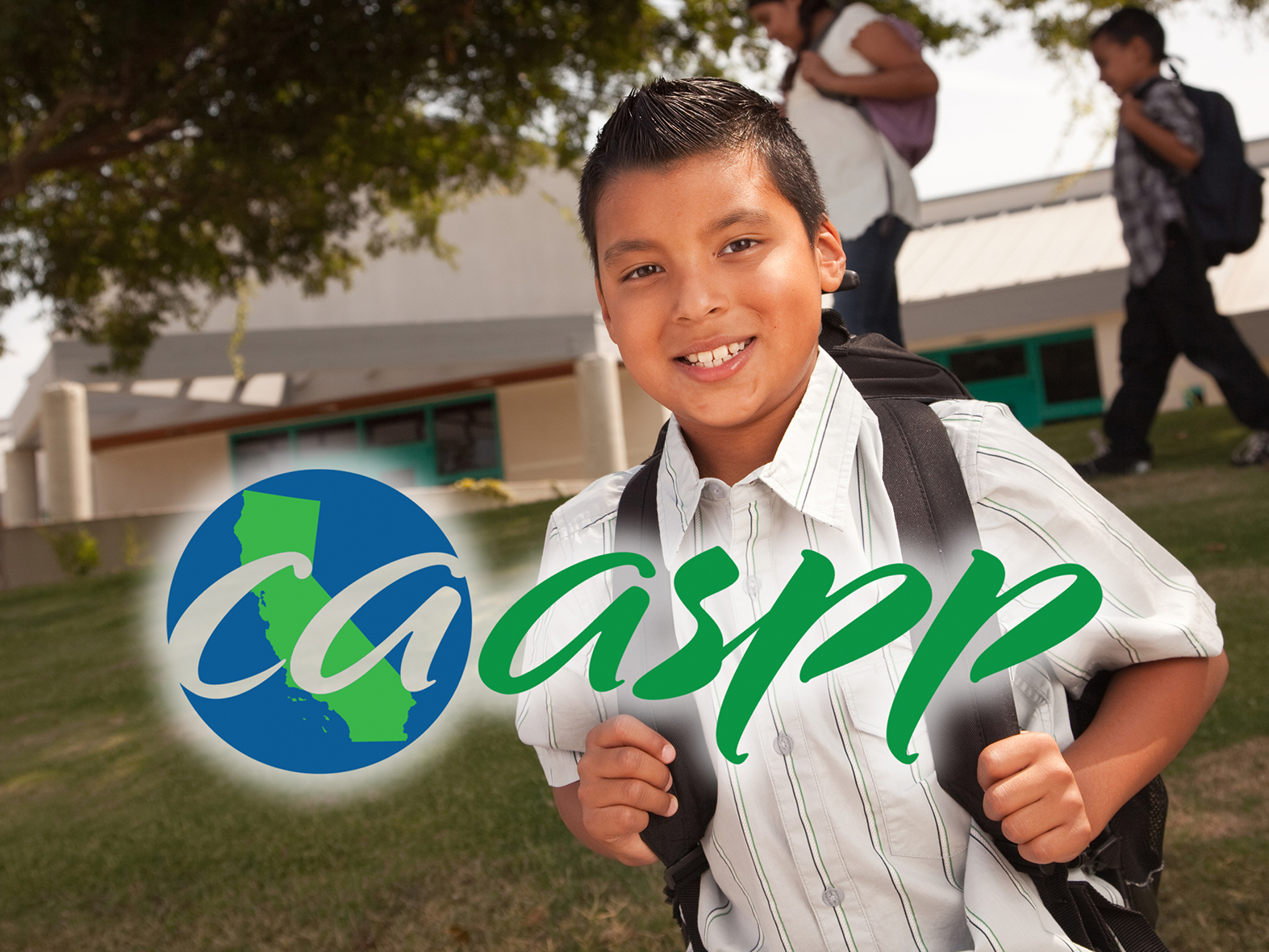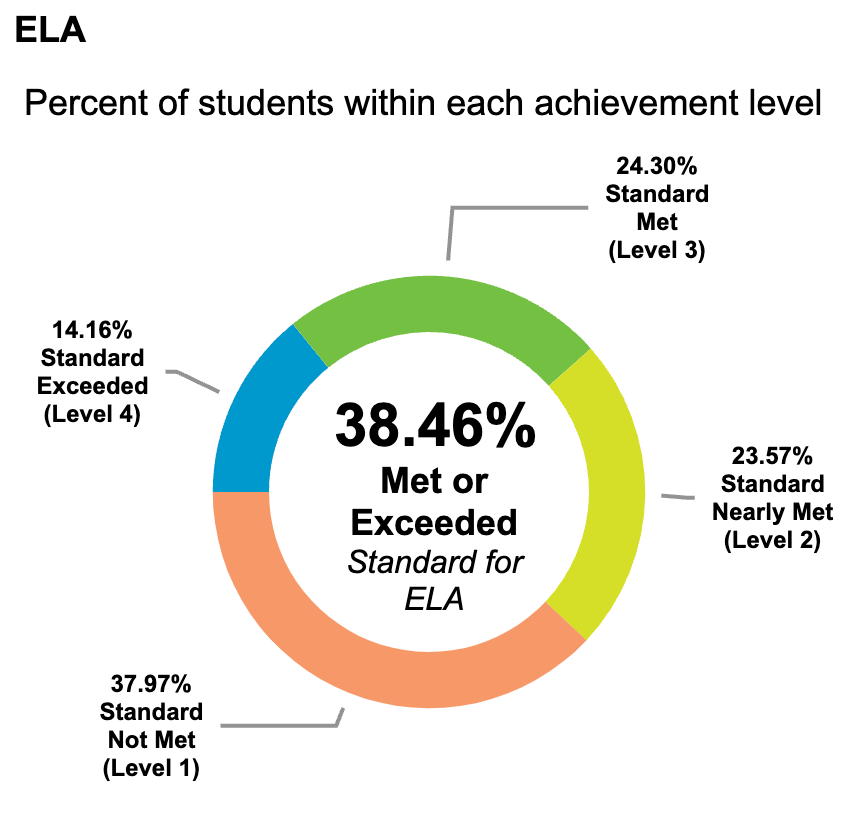
Test Scores Show Modest Gains, Numerous Bright Spots Among Kern Districts
Thursday October 17, 2024
Every spring, students in grades third through eighth and 11 in classrooms across Kern County and California take Smarter Balanced assessments to measure how well they grasp educational standards in English Language Arts (ELA) and math. These assessments are part of the California Assessment of Student Performance and Progress (CAASPP).
The latest scores reveal both strides in closing learning gaps and areas that need improvement as schools recover from the pandemic’s impact. Among Kern’s 46 school districts, 38.46 percent of students met or exceeded English Language Arts/Literacy standards and 23.37 percent in math last school year, a slight improvement over the previous year.
Kern County Superintendent of Schools Dr. John Mendiburu says the results enable educators to analyze progress and pinpoint areas for more targeted interventions. He pointed out that while overall data has improved only slightly over the past two years, bright spots throughout the county are significant and should be celebrated.



Students from Midway Elementary in Fellows, Calif. pose for a photo.
Leading the Way
The tiny Midway School District, serving around 70 students on Kern’s western edge, boasts some of the highest student achievement countywide. Last school year, 58.5 percent of students met or exceeded standards in ELA and 57.5 percent in math. This accounts for significant performance growth of nearly 20 percent in ELA and nearly 9 percent in math over the past two school years. Superintendent/Principal Al Quezada credits much of the district’s success to its small school environment, which fosters a close-knit, personalized educational experience.
“We are fortunate to offer a learning environment with less than 20 students per classroom,” Quezada said. “This helps with distractions, and most importantly, it allows us to provide individualized instruction, making each student feel valued.”
But only some of the success is inherent. Quezada says the district has been very intentional in implementing new strategies aimed at improving outcomes. Key among them are new math support and interventions both in the classroom and through after-school programs, increased hours for classroom aides to better support small group and one-on-one instruction, and implementing student early out days every Wednesday so teachers can collaborate, communicate with parents, and take advantage of valuable professional development.
Meanwhile, at the county’s north end, an impressive 64 percent of students in the Delano Joint Union High School District met or exceeded ELA standards, eclipsing California’s average of 47 percent by a healthy margin.
District Superintendent Jason Garcia attributes the district’s ELA scores to several factors, chief among them being teacher collaboration time, which allows for vertical alignment of the curriculum, instruction, and assessments.
“Students are supported throughout the school day with multiple measures that target their areas of growth,” he added.
Other Kern districts on pace with the state average in ELA include Delano Union Elementary (47.2%), Fruitvale (51.1%), Kern High (49.7%), McKittrick (53.9 %), Midway (58.5%), Norris (56.4%), Rio Bravo-Greeley (52.4%), Rosedale (52.4%), Wasco High (47.5%), Wonderful Prep (48.6%), and Panama-Buena Vista (46.2%).
Notable Growth
Numerous school districts have made notable growth in closing the achievement gap. In ELA, the most improved school districts over the past two years include Midway Elementary (19.8%), Elk Hills Elementary (12.8%), Maple Elementary (11%), Vineland Elementary (7.5%), and Delano Elementary (7.4%). In math, the most growth has come from El Tejon Unified (11.1%), Delano Union Elementary (10.4%), Maple Elementary (10.4%), Midway Elementary (8.5%), and Elk Hills Elementary (7.4%).

According to Elk Hills Superintendent/Principal Tiffany Touchstone, improvements are attributed to several strategies. The district has implemented a Walk to Learn program in ELA and math, wherein students spend a portion of their day rotating between teachers for targeted instruction tailored to their specific skill levels.
Reciprocal teaching, an ELA approach designed to boost reading comprehension, has also helped. This method encourages students to predict, question, clarify, and summarize texts in a collaborative learning environment. Initially led by the teacher, the process gradually shifts responsibility to students, fostering critical thinking and independent learning.
Elk Hills also benefits from being part of the West Kern Consortium for Community Schools, collaborating with other districts to fund programs such as an intervention coordinator, math coaching, and services that break down learning barriers. The Community School team includes a social worker, engagement coordinator, and AmeriCorps mentors.
“Our staff works closely to review data, guide instruction, and ensure that students maintain excellent attendance, build strong relationships, and practice social-emotional learning,” Touchstone added.

Shane Pate from the Elk Hills School District leads a small-group reading lesson.
In the Maple School District, also part of the West Kern Consortium, Superintendent Bryan Easter says the progress is due mainly to heavily investing in literacy intervention programs, adopting more collaborative strategies in math, robust professional development efforts, and using interim assessments to monitor student progress.
He was especially proud of the work done to improve outcomes for students with special needs. The district has implemented a hybrid model that gives students with disabilities access to the general education curriculum in an inclusive classroom environment while still receiving targeted, individualized support.
“Through one-on-one group support, small group learning structures, and constant team collaboration, our students are getting the attention they need,” Easter added.
As a result, the number of students with Individualized Education Plans (IEPs) who are meeting or exceeding standards has grown from 6 percent to over 31 percent over the past two years.

Taft Union High School had the most performance growth during the last school year in ELA with an 11 % gain and the second most growth in math with a 6.6% increase.
Addressing Math Outcomes
Across California—and here at home—math performance and growth statistics lag those of ELA. Cole Sampson, chief curriculum and instruction officer at the Kern County Superintendent of Schools, says that many factors are at play.
“ELA instruction can sometimes feel more flexible, allowing teachers to meet students where they are and build on their existing literacy skills more fluidly,” he explained. “Math builds on sequential skills, and gaps in foundational knowledge can make it harder for students to catch up quickly.”
Math anxiety and mindset challenges can also act as barriers to learning. While strides are being made to address this through new instructional approaches that foster critical thinking and resilience, Sampson says, it remains an ongoing effort.
“Post-pandemic, we are focusing heavily on how we can create supportive environments for math learners, leveraging inquiry-based strategies and blending traditional instruction with more dynamic, hands-on learning experiences,” he said.

Many school districts have shifted math instruction from a traditional teacher-centered model to more collaborative, student-centered tasks.
The El Tejon School District in Frazier Park and the Taft Union High School District achieved the most growth countywide in math during the last school year, with 8 percent and 6.6 percent growth, respectively. Their approaches have been markedly similar, focusing on improving student attendance, building solid Professional Learning Communities (PLC) where teachers share best practices and learn from one another, and shifting classroom instruction to more collaborative models.
“Students can’t learn if they’re not in school,” said El Tejon Superintendent Sara Haflich, emphasizing the importance of addressing chronic absenteeism first.
The district implemented several strategies to improve attendance rates, including hiring a student success facilitator to act as a family liaison, using data platforms to identify trends, and offering more mental health support.
“We’ve focused on building a solid Professional Learning Community (PLC) process and brought in math coaches to work with teachers,” Haflich noted.
At Fraizer Mt. High School, the district has shifted its math teaching from a traditional teacher-centered model to more collaborative, student-centered tasks.
“We have noticed a huge shift in motivation,” Haflich said. “By getting students out of their seats and talking, they are able to focus on the task. “The teacher hears their name called less often, and more students are helping each other.”
CAASPP results are available to the public at HERE.
By Robert Meszaros
Rob Meszaros is Director of Communications for the Kern County Superintendent of Schools, where he has served since 2012. In his role, Meszaros oversees media relations, internal and external communication strategies, publications, Marcom, branding, and multi-media content creation. Before joining KCSOS, Meszaros was the PIO for CSU Bakersfield and earlier worked for seven years at The Bakersfield Californian.
